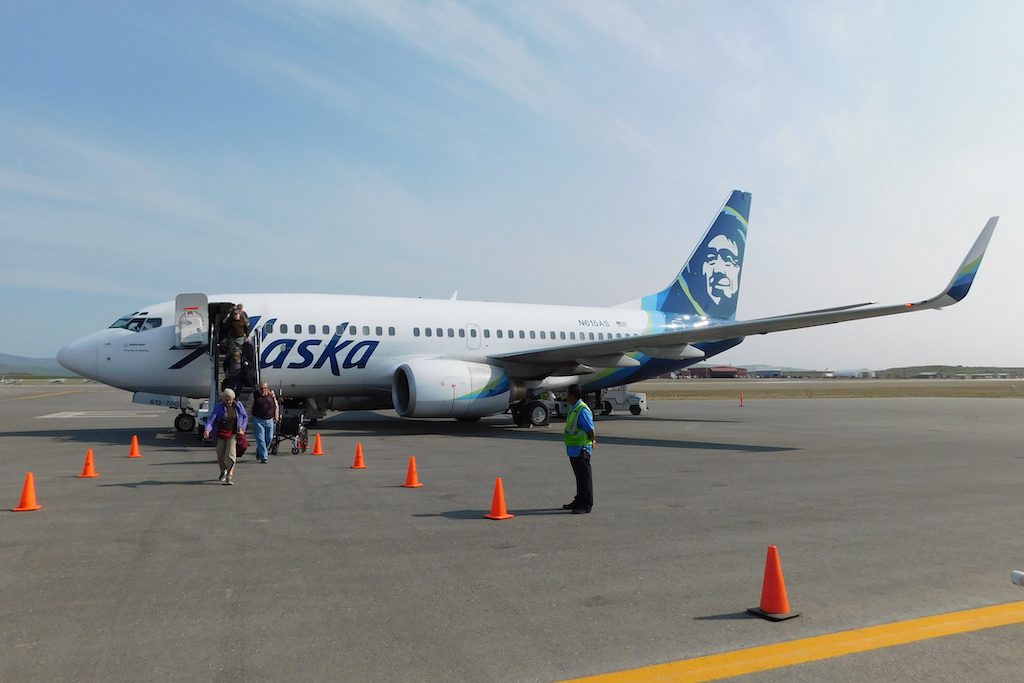Skift Take
People joke that Alaska Airlines' name no longer makes sense. But the airline still has a huge franchise in the state. It's going to want to defend its turf.
To many flyers in the continental United States, who may travel from Los Angeles to New York or Seattle to Orlando, the name “Alaska Airlines” is an anachronism that no longer fits the fifth-largest U.S. carrier, headquartered in Seattle.
But Alaska remains the biggest U.S. airline in the state of Alaska, not only flying an average of 42 daily departures from Anchorage but also operating routes like Prudhoe Bay to Utqiagvik, a roughly 45-minute segment for which the lowest round-trip fare for fall travel is $544. The airline even has a stake in cargo, hauling supplies, fish, and mail.
Alaska will probably never have much competition on intrastate routes or freight. Increasingly, though, domestic rivals have added routes to Anchorage, tapping into the lucrative summer tourism market. This summer American Airlines is flying an Airbus A321neo from Phoenix and a Boeing 787 from Dallas/Fort Worth. Discount airlines Sun Country and Allegiant Air also added flights to Anchorage for the high summer season.
Alaska’s executives have noticed. Speaking Thursday on the carrier’s second-quarter earnings call, Chief Commercial Officer Andrew Harrison said the airline “saw increased industry capacity” from the lower 48 U.S. states into Alaska, “putting some pressure on our long-haul Alaska yields.” Alaska flights account for about 10 percent of the airline’s overall capacity, according to its website.
Alaska executives said they’ll fight back if needed, suggesting they might start more flights from the continental United States to Anchorage. Today it funnels much of its Alaska-bound traffic through Seattle, though it has several other routes to Anchorage, including from Chicago, Los Angeles, Honolulu, and Phoenix.
“If there is a desire for more longer-distance flying into Alaska hubs, we should be competing for that,” CEO Brad Tilden told analysts.
Not Yet a Big Threat
So far the threat is mild, but analyst Hunter Keay asked if it might increase as more airlines take more newer, long-range aircraft.
Modern narrow-body aircraft, like the Airbus A321neo and Boeing 737 Max (when it flies again) have better performance characteristics and economics than older jets, making Anchorage more viable than in the past for some carriers. “Are you prepared for this?” Keay asked.
Harrison said it is, noting Alaska has the same opportunities as competitors. Alaska has eight A321neos, and it likely will receive the first of its 32 Boeing 737 Max jets after the Federal Aviation Administration clears the aircraft. Both planes can fly long distances from Anchorage.
“The way that we look at it is, the opportunity for others is the same equal opportunity for us,” Harrison said.
Both he and Tilden said Alaska has a built-in advantage in Alaska because of its history. Tilden said roughly two out of three Alaska residents belong to the airline’s frequent flyer program.
“We have a very, very strong network up there, a very, very strong loyalty proposition, and we will continue to fly where Alaskans need to go on a nonstop basis and as we go forward,” Harrison said.
Tilden also noted that while the summer tourist season brings visitors from all over, most of Alaska’s business traffic goes to the Pacific Northwest, especially Seattle, where the airline is based.
“Whether it’s government or fishing or timber or whatever … A lot of those business connections are here,” he said.
Future Concerns
While the current competitive landscape is manageable, travel industry analyst Henry Harteveldt said he expects Alaska will be aggressive against competition.
“Just like Hawaiian is almost the flag carrier of Hawaii, Alaska is in many ways the flag carrier of Alaska,” he said. “I think Alaska’s shareholders would demand the company explore ways to defend its unique position in Alaska rather than just hand if over to other airlines.”
Harteveldt said it might be temping to ignore other airlines, since most are adding flights only during peak summer season. But he said that would be a mistake.
“Alaska can’t allow itself to be seen as weak or inattentive to its core franchise within the state of Alaska,” he said. Today it is American flying a 787 from DFW to Anchorage. Tomorrow it is Southwest or another budget airline announcing service into the state on a year-round basis. That introduces a new dynamic in airline competition.”
The Daily Newsletter
Our daily coverage of the global travel industry. Written by editors and analysts from across Skift’s brands.
Have a confidential tip for Skift? Get in touch
Tags: alaska, alaska airlines
Photo credit: An Alaska Airlines Boeing 737 on the ground in Nome, Alaska. The state is a major priority for the airline. Jimmy Emerson / Flickr
